7 Great Ideas to Start Farming in September
7 Great Ideas to Start Farming in September – Starting a farming business in South Africa in September requires careful consideration of the climate, soil conditions, and market demand. Here are a few farming options that could be suitable for starting in September:
- Spring Crops: September marks the beginning of spring in South Africa. This is a good time to consider planting spring crops like maize, sunflowers, soybeans, and various vegetables such as tomatoes, peppers, and cucumbers. These crops can take advantage of the increasing daylight and warmer temperatures.
- Fruit Farming: South Africa has a diverse climate that supports the cultivation of various fruits. Consider starting a fruit farm with crops like citrus (oranges, lemons, etc.), apples, pears, and stone fruits like peaches and plums. Many fruit trees require planting in the early spring, making September a suitable time to prepare and plant.
- Herbs and Medicinal Plants: The demand for fresh herbs and medicinal plants has been growing steadily. Herbs like basil, mint, rosemary, and thyme, as well as medicinal plants like aloe vera, can be grown in various regions of South Africa. These crops can be relatively low-maintenance and have a good market potential.
- Poultry Farming: Starting a poultry farm, particularly raising broiler chickens or egg-laying hens, can be a lucrative venture. September can be a good time to set up the necessary infrastructure and start sourcing chicks or hatching eggs.
- Beekeeping: Beekeeping can be a rewarding agricultural business. Bees play a crucial role in pollination, which enhances crop yields. September is a suitable time to establish bee colonies, as it gives them time to settle in and build up their numbers before the main flowering seasons.
- Aquaculture: If you have access to suitable water resources, aquaculture (fish farming) could be an option. Tilapia and catfish are commonly farmed fish species in South Africa. Proper planning and obtaining necessary permits are essential before starting an aquaculture venture.
- Niche or Specialty Crops: Depending on the specific region you are in, you might consider niche or specialty crops that have high demand in local markets. These could include organic produce, exotic vegetables, microgreens, or specialty mushrooms.
Spring Crops
Starting a spring crop farming business in South Africa in September can be a great idea, as it aligns with the beginning of the planting season. Here are some popular spring crops you can consider:
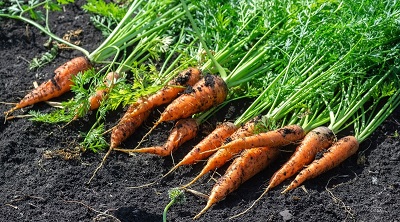
7 Great Ideas to Start Farming in September
- Maize (Corn): Maize is a staple crop in South Africa and has a high demand both domestically and for export. It’s important to choose the right maize variety for your region and to ensure proper soil preparation and irrigation.
- Sunflowers: Sunflowers are a valuable crop for their seeds, which are used in cooking oil and other food products. They can also be grown for their ornamental value. Sunflowers are relatively drought-resistant and can be a good choice in regions with lower water availability.
- Soybeans: Soybeans are a protein-rich legume used in various food products and animal feeds. They can be a profitable crop if managed well. Proper pest and disease management is essential for soybean farming.
- Vegetables: Many vegetables thrive in the spring season. Some popular options include tomatoes, peppers, cucumbers, beans, and lettuce. These crops can be grown for both local consumption and potential markets.
- Herbs: Spring is a good time to start cultivating various herbs like basil, parsley, cilantro, and mint. These herbs are used in culinary dishes and have a growing market among health-conscious consumers.
- Green Beans: Green beans are a fast-growing vegetable that can be a profitable choice for spring planting. They are popular in both local and export markets.
- Peas: Peas are another quick-growing spring crop that can be cultivated for their pods and peas. They are often used in salads, stir-fries, and other dishes.
- Broccoli and Cauliflower: These cruciferous vegetables are well-suited to cooler spring temperatures. They have a strong market demand and can be grown in different varieties.
- Carrots: Carrots are root vegetables that can be grown successfully in the spring. They come in various colors and sizes, making them popular in both fresh markets and for processing.
- Spinach: Spinach is a nutritious leafy green that grows well in cooler temperatures. It’s in demand for salads, cooking, and as an ingredient in various products.
Fruit Farming
Starting a fruit farming business in South Africa in September can be a promising venture, as many fruit crops require planting during the spring season. Here are some fruit crops you might consider for your farming business:
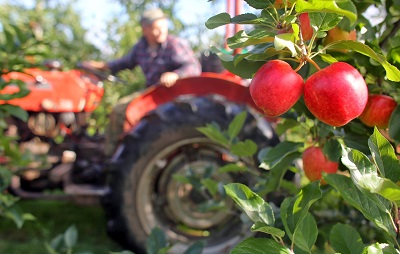
7 Great Ideas to Start Farming in September
- Citrus Fruits (Oranges, Lemons, Grapefruits, etc.): South Africa is renowned for its high-quality citrus fruits. Citrus farming requires well-draining soil and proper irrigation. Varieties like Valencia oranges and Eureka lemons are popular choices.
- Apples: Apple farming can be successful in certain regions with the right climate and soil conditions. Apples require careful management of pests and diseases. Popular apple varieties include Golden Delicious, Granny Smith, and Pink Lady.
- Pears: Pears are another tree fruit option that can be grown in suitable areas. They require well-draining soil and proper spacing for healthy growth. Varieties like Packham’s Triumph and Bon Chrétien are commonly cultivated.
- Stone Fruits (Peaches, Plums, Nectarines, Apricots): Stone fruits are well-suited to South African climates. They require proper pruning, disease management, and thinning of fruits for better quality and yield.
- Berries (Blueberries, Raspberries, Blackberries): Berries are becoming increasingly popular due to their health benefits. However, they require specific soil conditions and careful attention to water and nutrient management.
- Avocado: Avocado farming has seen significant growth in South Africa due to rising global demand. Avocado trees need well-draining soil and proper irrigation. Different avocado varieties have different harvest times.
- Grapes: Grapes can be grown for table consumption or for wine production. Varieties like Thompson Seedless and Red Globe are commonly cultivated. Grapes require trellising, pruning, and disease management.
- Figs: Figs are well-suited to certain regions with a Mediterranean climate. They are relatively drought-tolerant once established.
- Pomegranates: Pomegranates are gaining popularity for their health benefits. They require well-draining soil and can be grown in regions with hot and dry climates.
- Mangoes: While September might be a bit late to start planting mangoes, it’s worth considering for future years. Mangoes are a tropical fruit that requires a warm climate and well-draining soil.
Herbs and Medicinal Plants
Here are some herbs and medicinal plants you might consider cultivating:

7 Great Ideas to Start Farming in September
- Aloe Vera: Aloe vera is known for its soothing and healing properties. It’s used in various skincare and health products. Aloe vera farming requires well-draining soil and minimal water.
- Lavender: Lavender is valued for its aromatic properties and is used in perfumes, essential oils, and cosmetics. It requires good drainage and thrives in sunny locations.
- Chamomile: Chamomile flowers are used to make calming teas and herbal remedies. It prefers well-draining soil and can be grown in both gardens and containers.
- Echinacea (Purple Coneflower): Echinacea is believed to have immune-boosting properties. It’s used in herbal supplements and teas. Echinacea plants prefer full sun and well-drained soil.
- Lemon Balm: Lemon balm is known for its lemony scent and calming effects. It’s used in teas and herbal products. Lemon balm prefers partial shade and regular watering.
- Rosemary: Rosemary is a popular culinary herb with potential medicinal benefits. It thrives in well-draining soil and full sun.
- Peppermint and Spearmint: Both peppermint and spearmint are widely used for their aromatic leaves, which are used in teas, culinary dishes, and essential oils. They prefer moist soil and can be invasive, so proper containment is necessary.
- Calendula: Calendula flowers have soothing properties and are used in skincare products and herbal remedies. They’re relatively easy to grow and prefer well-draining soil.
- Valerian: Valerian root is used as a natural remedy for sleep disorders and anxiety. It requires moist, rich soil and partial shade.
- St. John’s Wort: St. John’s Wort is used for its potential mood-enhancing properties. It requires well-draining soil and full sun.
Before starting your herb and medicinal plant farming business, consider the following steps:
- Research: Understand the specific growing requirements of each herb or medicinal plant, including soil type, water needs, sunlight, and temperature preferences.
- Market Demand: Research the market demand for these herbs and medicinal plants. Identify potential buyers, such as herbal product manufacturers, health stores, and direct consumers.
- Infrastructure: Prepare suitable growing areas, whether in open fields or controlled environments like greenhouses. Invest in proper irrigation, soil preparation, and pest management techniques.
- Regulations: Familiarize yourself with any regulations or permits required for cultivating and selling herbs and medicinal plants, especially if you plan to process and sell products.
- Harvesting and Processing: Learn about the proper harvesting and processing methods to ensure the quality of your herbs and medicinal plants. This might involve drying, distillation, or other techniques.
- Marketing and Sales: Develop a marketing strategy to promote your herbs and medicinal plants. Consider creating a brand, establishing an online presence, and networking with potential buyers.
- Sustainability: Practice sustainable farming techniques to ensure the long-term health of your plants and the environment.
Poultry Farming
Here are some key considerations for starting a poultry farming business:
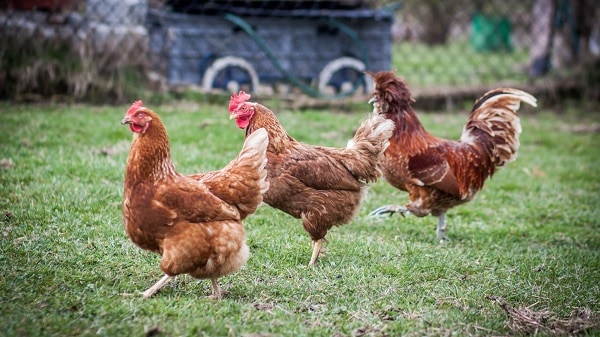
7 Great Ideas to Start Farming in September
- Choose the Poultry Type: Decide whether you want to focus on broiler production (meat) or egg production (layers). Each type has its own requirements and considerations.
- Housing and Infrastructure: Construct suitable poultry housing that provides proper ventilation, lighting, and temperature control. Adequate space per bird is crucial for their well-being.
- Biosecurity Measures: Implement strict biosecurity measures to prevent the spread of diseases. This includes controlling access to the farm, proper sanitation, and isolation of sick birds.
- Feeding and Nutrition: Develop a balanced and nutritionally adequate feeding program for your poultry. High-quality feed ensures optimal growth and egg production.
- Health Management: Establish a health management plan that includes vaccinations, regular health checks, and access to veterinary care. Promptly address any signs of illness.
- Breeds/Strains: Choose suitable poultry breeds or strains that are well-adapted to your climate and production goals. Some breeds are known for their meat production, while others are bred for egg-laying efficiency.
- Egg Production (Layers): If focusing on egg production, ensure you have proper nesting boxes, clean bedding, and a system for collecting eggs.
- Meat Production (Broilers): If raising broilers, provide proper feed, water, and a controlled environment to ensure rapid and healthy growth.
- Regulations and Permits: Familiarize yourself with local regulations and permits required for poultry farming. This might include environmental, health, and animal welfare regulations.
- Market Research: Understand the demand for poultry products in your area. Consider whether you’ll be selling to wholesalers, retailers, or directly to consumers.
- Costs and Budgeting: Calculate the costs involved in setting up and running your poultry farm. This includes infrastructure, feed, vaccinations, labor, and ongoing maintenance.
- Waste Management: Develop a waste management plan to handle manure and waste generated by the birds. Proper disposal or composting is important for environmental health.
- Scaling Up: Consider starting with a manageable number of birds and then gradually scaling up as you gain experience and confidence.
- Training and Knowledge: If you’re new to poultry farming, consider attending workshops, training sessions, or consulting experienced poultry farmers to learn best practices.
- Record Keeping: Maintain accurate records of expenses, production data, health issues, and other important aspects of your poultry farming business.
Beekeeping
Starting a beekeeping business in South Africa can be a rewarding venture that not only generates income but also supports pollination for agriculture and contributes to the environment. Here are some steps to consider when starting a beekeeping business:

7 Great Ideas to Start Farming in September
- Educate Yourself: Learn about the basics of beekeeping, including bee biology, hive management, bee diseases, and honey extraction techniques. There are various resources, courses, and workshops available for aspiring beekeepers.
- Regulations and Permits: Understand the legal requirements and regulations for beekeeping in your area. This might include registering your hives, following health and safety guidelines, and complying with any beekeeping regulations.
- Hive Placement: Choose suitable locations for placing your beehives. Consider factors like access to forage (flowers), water sources, and protection from harsh weather conditions.
- Beehive Equipment: Acquire the necessary beekeeping equipment, including beehives, frames, protective clothing (veils, suits, gloves), and tools for hive management.
- Bee Colony Acquisition: Obtain honeybee colonies from reputable sources. You can start with purchasing package bees, nucleus colonies (nucs), or even capturing swarms (if you have experience).
- Hive Management: Regularly inspect and manage your hives to ensure the health and productivity of your bee colonies. This includes monitoring for diseases, pests, and ensuring that the hive has enough space for honey storage.
- Honey Extraction: Learn the proper methods for extracting honey from the hives without harming the bees. You’ll need extraction equipment like honey extractors and uncapping tools.
- Product Diversification: Besides honey, consider offering other bee-related products like beeswax, propolis, royal jelly, and pollen.
- Bee Health: Implement disease management and prevention strategies to maintain the health of your bee colonies. This may involve integrated pest management (IPM) techniques and using natural remedies.
- Marketing and Sales: Determine your target market for honey and bee-related products. Develop a marketing strategy that may include local farmers’ markets, health food stores, online platforms, and direct sales.
- Environmental Considerations: Practice sustainable beekeeping by choosing appropriate hive management techniques that don’t harm the bees or the environment. Ensure your beekeeping practices support biodiversity and pollinator health.
- Networking: Connect with local beekeeping associations, clubs, and experienced beekeepers in your area. Networking can provide valuable insights, mentorship, and support.
- Safety: Beekeeping can involve working around stinging insects. Be sure to wear proper protective gear and have a plan for responding to stings.
Beekeeping can be a fulfilling hobby or a profitable business, but it requires patience, dedication, and ongoing learning. Since beekeeping practices can vary based on local conditions and bee species, consider seeking guidance from experienced beekeepers in your region. They can provide insights into local floral sources, pest challenges, and climate considerations.
Aquaculture
Starting an aquaculture business in South Africa can be a promising venture, especially given the increasing demand for seafood and the potential to contribute to local food security. Here are some steps to consider when starting an aquaculture business:
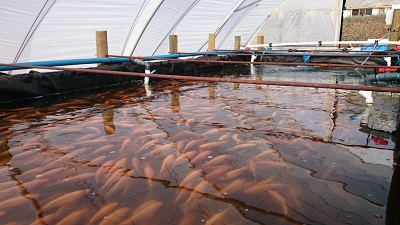
7 Great Ideas to Start Farming in September
- Select a Suitable Species: Choose the type of aquatic species you want to farm. Common aquaculture species in South Africa include tilapia, catfish, trout, and freshwater prawns. Your choice should consider local climate, water availability, and market demand.
- Site Selection: Identify a suitable location for your aquaculture operation. Factors to consider include water quality, availability of a reliable water source, land availability, access to markets, and environmental regulations.
- Infrastructure Setup: Construct the necessary infrastructure for your aquaculture farm, including ponds, tanks, or raceways. Ensure that the facilities provide appropriate water circulation, aeration, and waste management.
- Water Quality Management: Maintain optimal water quality parameters such as temperature, dissolved oxygen, pH, and ammonia levels. Proper water management is critical for the health and growth of your aquatic species.
- Feeding and Nutrition: Develop a balanced and nutritionally complete feeding program for your aquatic species. High-quality feed is essential for growth and profitability.
- Stocking: Introduce your chosen aquatic species into the farming system. Be sure to follow recommended stocking densities to prevent overcrowding and stress.
- Health Management: Implement a health management plan to prevent and address diseases. Regular monitoring, vaccination (if applicable), and quarantine procedures are important.
- Harvesting: Determine the optimal harvest time for your aquatic species. Proper handling and harvesting techniques are crucial to ensure the quality of your products.
- Market Research: Research the market demand for your chosen aquatic species. Identify potential buyers, including restaurants, seafood markets, wholesalers, and direct consumers.
- Regulations and Permits: Understand and comply with aquaculture regulations and permits set by local authorities. These may include environmental regulations, water usage permits, and health standards.
- Record Keeping: Maintain detailed records of production, expenses, feed consumption, and water quality. This data is essential for tracking the success of your operation and making informed decisions.
- Scaling Up: Consider starting with a manageable number of fish or other aquatic species and gradually expanding as you gain experience and confidence.
- Sustainability: Practice sustainable aquaculture methods to minimize environmental impacts. This includes managing waste, conserving water, and adopting responsible farming practices.
- Training and Knowledge: If you’re new to aquaculture, seek training and guidance from experienced aquaculturists, attend workshops, and stay updated on industry trends.
- Networking: Connect with local aquaculture associations, experts, and other aquaculture farmers to share experiences and gain valuable insights.
Niche or Specialty Crops
Starting a niche or specialty crop farming business in South Africa can be a creative and potentially profitable venture. Niche crops often cater to specific markets with unique demands. Here are some niche or specialty crop options you might consider:
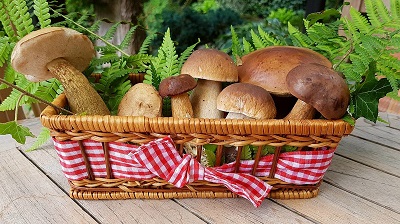
7 Great Ideas to Start Farming in September
- Microgreens: Microgreens are young, edible plants that are harvested just after their first true leaves appear. They are used to enhance the flavor, color, and nutritional value of dishes. Popular microgreens include sunflower, pea shoots, radish, and basil.
- Exotic Vegetables: Consider growing vegetables that are not commonly found in local markets. Exotic vegetables like purple carrots, heirloom tomatoes, and colored bell peppers can attract health-conscious and adventurous consumers.
- Heritage or Heirloom Varieties: Heritage or heirloom crops are traditional plant varieties that have been passed down through generations. These varieties often have unique flavors, colors, and shapes. Examples include heirloom tomatoes and colorful beans.
- Edible Flowers: Certain flowers are edible and can be used as decorative elements in culinary dishes. Examples include nasturtiums, pansies, and calendula petals.
- Specialty Mushrooms: Consider cultivating gourmet mushrooms such as shiitake, oyster, or lion’s mane. These mushrooms are sought after by chefs and health enthusiasts for their unique flavors and potential health benefits.
- Herbs for Tea Blends: Cultivate herbs like chamomile, lavender, lemon verbena, and lemongrass to create herbal tea blends. Herbal teas are popular for their soothing properties and diverse flavors.
- Spices: Grow unique spices like saffron, turmeric, or vanilla. These crops require specific growing conditions but can command higher prices due to their culinary value.
- Edible Landscaping Plants: Some ornamental plants are also edible and can be incorporated into landscaping projects. For instance, berry bushes, edible flowers, and certain herbs can be both functional and visually appealing.
- Baby Vegetables: Produce miniature versions of vegetables like baby carrots, baby spinach, and baby zucchini. These can be sold as premium products to restaurants and specialty stores.
- Hydroponic or Vertical Farming: Utilize innovative growing methods such as hydroponics or vertical farming to produce crops in limited spaces. These methods often result in faster growth and higher yields.
Before starting any farming venture, it’s important to conduct thorough research and planning. Consider factors such as climate, soil quality, water availability, market demand, and your own expertise and resources. Additionally, consult with local agricultural extension services, agricultural experts, and other farmers to gather insights and advice specific to your chosen venture and region.
YouTube Channel: Farming South Africa
Facebook Page: Farming Life
Back To Home Page: Farming South Africa
7 Great Ideas to Start Farming in September

